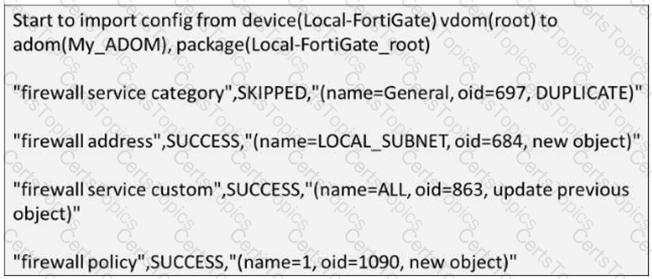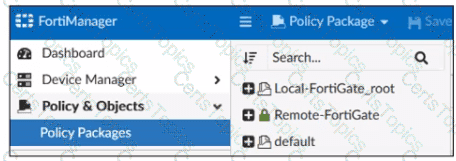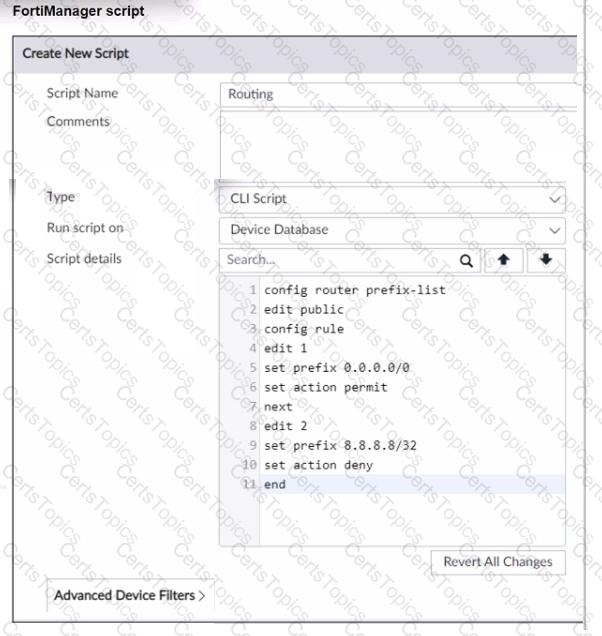Refer to the exhibit.

Given the import report shown in the exhibit, how did FortiManager handle the service category namedGeneral?
Exhibit.

Given the configuration shown in the exhibit, which two statements are true? (Choose two.)
What are two outcomes of ADOM revisions? (Choose two.)
What is a characteristic of the FortiManager high availability (HA) feature?
Refer to the exhibit.

Which two results occur if the script is run using the Device Database option? (Choose two.)
When an installation is performed from FortiManager, what is the recovery logic used between FortiManager and FortiGate for an FGFM tunnel?
An administrator enabled workspace mode and now wants to delete an address object that is currently referenced in a firewall policy. Which two results can the administrator expect? (Choose two.)
Refer to the exhibit.

A service provider administrator has assigned a global policy package to a managed customer ADOM namedMy_ADOM, which has four policy packages. The customer administrator has access only toMy_ADOM.
How can the customer or service provider administrators remove the global header policy from the policy package namedShared_Package?
An administrator runs the reload failure command diagnose test deploymanager reloadconf
What does this command do?
Exhibit.

Given the configuration shown in the exhibit, what are two results from this configuration? {Choose two.)
An administrator configures a new OSPF area on FortiManager and has not yet pushed the changes to the managed FortiGate device. In which database will the configuration be saved?
You are moving managed FortiGate devices from one ADOM to a new ADOM.
Which statement correctly describes the expected result?
Which two conditions trigger FortiManager to create a new revision history? (Choose two.)
Which two statements about Security Fabric integration with FortiManager are true? (Choose two.)
Which two items does an FGFM keepalive message include? (Choose two.)
Refer to the exhibit.

An administrator is about to add the FortiGate device to FortiManager using the discovery process.
FortiManager is operating behind a NAT device, and the administrator configured the FortiManager NATed IP address under the FortiManager system administration settings.
What is the expected result?
Refer to the exhibit.

You are using the Quick Install option to install configuration changes on the managed FortiGate.
Which two statements correctly describe the result? (Choose two.)
An administrator wants to create a policy on an ADOM that is in backup mode and install it on a FortiGate device in the same ADOM. How can the administrator perform this task?